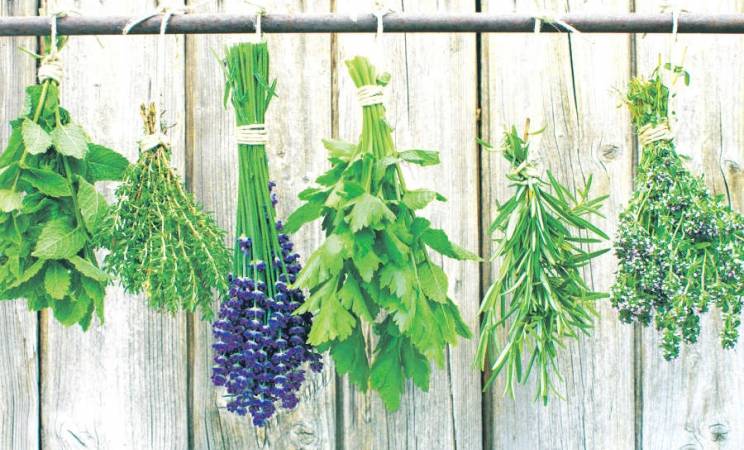Herbs essential in Spanish gardens

MORE than 40 different herb plants are surviving the summer heat in our garden, in shrub beds, the vegetable garden, on rockeries or in pots. Some are in full sun, others are in semi or dappled shade. Most importantly many withstand both extreme summer and winter temperatures.
Many of the herbs are used for cooking, refreshing infusions, and natural remedies for plants - and humans - as well as for their perfume, flowers and attraction for butterflies and other beneficial insects. No wonder herbs have been an essential feature of Spanish gardens since time memorial and cover most hillsides.
Herbs can be fitted into gardens of all sizes in a number of ways:
• Planted in pots or larger containers, either within the garden or conveniently by the kitchen door. Or of course in a patio courtyard or the terrace of an apartment or penthouse.
• In a dedicated herb garden with a squared, wagon wheel or raised spiral, or medieval tied knot design.
• Alongside the vegetable plot or paths.
• Mixed in with alpines and succulents in a rockery.
• Mixed into the front and mid depth of a mixed perennial/shrub bed.
• Creeping thyme and dichondra as lawns in shady areas.
• As internal hedges. Rosemary, bay and lavender are especially useful.
• Mints are best planted in large, sunken pots or barrels as the roots can spread evasively. Or build up a collection of different leaved and flavoured varieties in a cluster of pots or containers.
• In the vegetable garden borage, cultivated and wild garlic, fennel and artichokes, tagetes menor not only brighten up a plot but are also useful companion plants that help protect vegetables from plagues like carrot fly, black and white fly and swarming beetles. A patch of comfrey has several uses. Fermented in a plastic barrel it produces a very useful plant feed. Some gardeners use it as a poultice to accelerate the curing of gardening or other sprains and cracked bones and get rid of the early signs of gout.
HARVESTING HERBS
For cooking and salads, best picked fresh as required. Can also be sun-dried or cool oven- dried and then sealed in airtight containers. Also try freezing in ice cubes for use in soups and sauces.
Pick seeds such as coriander and anis just before fully dry and dry in the sun. If you leave them to fully ripen the seeds will fall in the first strong breeze.
For pot-pourri, pick a mix of leaves and flowers at any time of the year.
For adding to oils, pick flowers like marigolds and hypericum when in full flower.
For infusions, pick fresh as required or sun dry in the summer and dry for winter use.
For distilling essential oils, the easiest herbs to use include lavender, rosemary and geranium.
For enriching the soil or accelerating the compost heap, we find that comfrey and borage are excellent in this respect. Cut the leaves several times a year.
Yes, it’s amazing how much herbs can add to the garden and how multi-purpose they can be. But if you are allergic to bees, be warned that they can attract them when in flower.









 Back
Back


